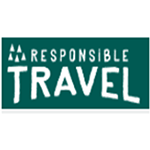
Discover how to measure and report on your positive impacts and leverage these benefits to strengthen your brand identity and build lasting traveler relationships.

Benefits
12 questions to unleash the power of sustainable travel
Key to Success
- The importance of identifying and promoting the benefits of tourism, such as economic growth, job creation, cultural exchange, and community development.
- The role of sustainable tourism in maximizing the benefits of tourism is adopting sustainable practices to enhance the long-term benefits of tourism and create value for all stakeholders.
- The importance of measuring and reporting on the benefits of tourism is to collect and analyze data on the economic, social, and environmental impacts of tourism and use this information to demonstrate the value of tourism to stakeholders and promote the industry’s STD.
Accomplishments
- Identify which positively impacts our business cause on tourism destination.
- Highlight the long-term impacts.
- Find benefits that can be added to our brand identity and traveler relationships.
Time-Saving Tools
- Our marketing plan and strategic plan.
- The tourism destination market plan and strategic plan.
- The trade travelers and other relevant stakeholders.
- Our Pricing Strategies.
- Our financial flow.
- Our full budget.
- All documents could be applied to find relevant information.
Presentation
Typically “Benefits” refers to the advantages or positive outcomes a business can gain from its operations or activities. Which can vary depending on the specific type of business and the market it operates in. Small and Medium-sized Tourism Enterprises (SMTEs) that prioritize sustainability can generate a wide range of sustainable benefits. Here are some expected sustainable benefits that Small and Medium-sized Tourism Enterprises (SMTEs) can generate:
- Environmental conservation and protection: Small and Medium-sized Tourism Enterprises (SMTEs) can contribute to environmental preservation and protection by implementing sustainable practices, such as reducing waste and energy use, conserving water, and protecting natural habitats and wildlife.
- Social and cultural preservation: Small and Medium-sized Tourism Enterprises (SMTEs) can contribute to social and cultural protection by promoting local traditions and customs, supporting local artisans and craftspeople, and engaging in community development initiatives.
- Positive impact on local economies and communities: Small and Medium-sized Tourism Enterprises (SMTEs) can positively impact local economies and communities by supporting local suppliers and businesses, providing jobs and training opportunities, and promoting sustainable tourism practices.
- Increased resilience and risk management: Small and Medium-sized Tourism Enterprises (SMTEs) can increase their strength and ability to manage risks by implementing sustainable practices, such as reducing dependence on non-renewable resources, diversifying their product offerings, and engaging in disaster preparedness and response planning.
- Cost savings and efficiency improvements: Small and Medium-sized Tourism Enterprises (SMTEs) can achieve cost savings and improve efficiency by implementing sustainable practices, such as reducing energy and water use, optimizing transportation and logistics, and reducing waste and inefficiencies.
- Developing new skills and knowledge: Small and Medium-sized Tourism Enterprises (SMTEs) can develop new skills and knowledge by engaging in training and professional development opportunities, collaborating with other businesses and organizations, and staying up-to-date with industry trends and best practices.
- Access to new markets and travelers: Small and Medium-sized Tourism Enterprises (SMTEs) can access new markets and travelers by offering sustainable tourism experiences and products, attracting eco-conscious travelers, and partnering with other sustainable businesses and organizations. Also, by expanding their services, targeting new traveler segments, and building partnerships with other businesses and organizations.
- Improved traveler satisfaction and loyalty: Small and Medium-sized Tourism Enterprises (SMTEs) can improve traveler satisfaction and loyalty by offering sustainable tourism experiences and products, engaging in sustainable practices, and communicating sustainability initiatives to travelers.
- Increased brand recognition and reputation: Small and Medium-sized Tourism Enterprises (SMTEs) can build brand recognition and reputation by providing high-quality services, engaging in marketing and advertising, and building relationships with travelers and partners.
- Benefits can be a source of competitive advantage: Small and Medium-sized Tourism Enterprises (SMTEs) should recognize that the benefits they receive can be a source of competitive advantage. By emphasizing their benefits over competitors, SMTEs can differentiate themselves in the market and attract more travelers.
In summary, Small and Medium-sized Tourism Enterprises (SMTEs) prioritizing sustainability can generate many sustainable business benefits, contributing to their long-term success and sustainability. Furthermore, by understanding these benefits and working to achieve them, Small and Medium-sized Tourism Enterprises (SMTEs) can positively impact the environment, society, and industry.
GUIDING QUESTIONS
How can we promote responsible and sustainable practices throughout our benefits? Implementing eco-friendly initiatives and supporting local communities will contribute to small tourism enterprises' long-term success and reputation within our benefits.
YScala
- How do our operations impact the environment, and what sustainable practices can we implement to reduce our environmental footprint?
- How can we contribute to the communities social and cultural preservation?
- How can we communicate our sustainability initiatives to travelers and improve their satisfaction?
- What new markets and traveler segments can we attract by offering sustainable tourism experiences and products?
- What are the measurable improvements generated from our business outcomes?
- How can we support local economies and communities through sustainable tourism practices, such as supporting local suppliers and businesses and providing jobs and training opportunities?
- What does the business generate sustainable benefits (social, economic, and environmental)?
- What is the improvement in business financial performance (financial impact) that results directly or indirectly from achieving one or more benefits?
- What is the ‘disbenefit’ (something resulting from the business outcomes that make a situation disadvantageous or unfavorable)?
- What risks do we face as a sustainable tourism enterprise, and how can we increase our resilience and ability to manage these risks through sustainable practices?
- What cost savings and efficiency improvements can we achieve by implementing sustainable practices, such as reducing energy and water use, optimizing logistics, and reducing waste?
- How can we measure and track the sustainable benefits we generate from our operations, and how can we use this information to improve our sustainability practices?
Offering more information
Besides the 12 guiding questions we’ve provided to help us evaluate and improve our Benefits, we’ve compiled a list of valuable resources to further our knowledge and understanding of Benefits. Notably, these resources offer insights into best practices, sustainability, marketing, and more, catering to the needs of tourism professionals and stakeholders. Consequently, by exploring these links, you’ll be better equipped to make informed decisions and create a thriving, competitive, and sustainable destination for travelers from around the world.
- What are the advantages of tourism industry? – Sage-Advices: This webpage answers the question of what are the main advantages of tourism industry, such as boosting the revenue of the economy, creating jobs, developing the infrastructure, allowing for cultural exchange, preserving natural and cultural resources, and providing opportunities for entertainment and family interaction.
- Why Tourism? | UNWTO: This webpage explains why tourism is important for economic and social development. It also provides some statistics and facts on the global tourism sector, such as its contribution to GDP, employment, investment, exports, etc. It also highlights the role of UNWTO in promoting sustainable tourism.
- 21 reasons why tourism is important – the importance of tourism: This article lists 21 reasons why tourism is important from two perspectives: the tourism industry and the tourist. It covers aspects such as quality of life, education, escapism, wellbeing, innovation, diversity, etc.
- The Importance of Tourism on Economies and Businesses – globalEDGE: This webpage discusses the importance of tourism on economies and businesses. It also provides some examples of how tourism affects different sectors, such as agriculture, construction, transportation, etc.
- Importance of Tourism and its Economic Value – Market Width: This webpage discusses the importance of tourism and its economic value. It also provides some benefits of tourism for different stakeholders, such as tourists, businesses, governments, local communities, etc.
- 10 Economic impacts of tourism + explanations + examples – Tourism Teacher: This article explains 10 economic impacts of tourism with examples. It covers both positive and negative impacts, such as foreign exchange earnings, multiplier effect, leakage, inflation, etc.
As you conclude reading this orientation post, we’d like to invite you to explore the other insightful articles in our Business Tailor 4 Sustainable Tourism Develop Management Tool (BT4-STDM) blog. We invite you to engage with our community, share your perspectives, and contribute to this meaningful conversation by commenting below. Your experiences and ideas can help others in their sustainable tourism development management journey.
Let your like and recommend this post to improve your audience!
Share this post with friends, colleagues, or anyone else who might be interested.
Comments:
We invite you to engage with our community, share your perspectives, and contribute to this meaningful conversation by commenting below. Your experiences and ideas can help others in their sustainable tourism development management journey.













